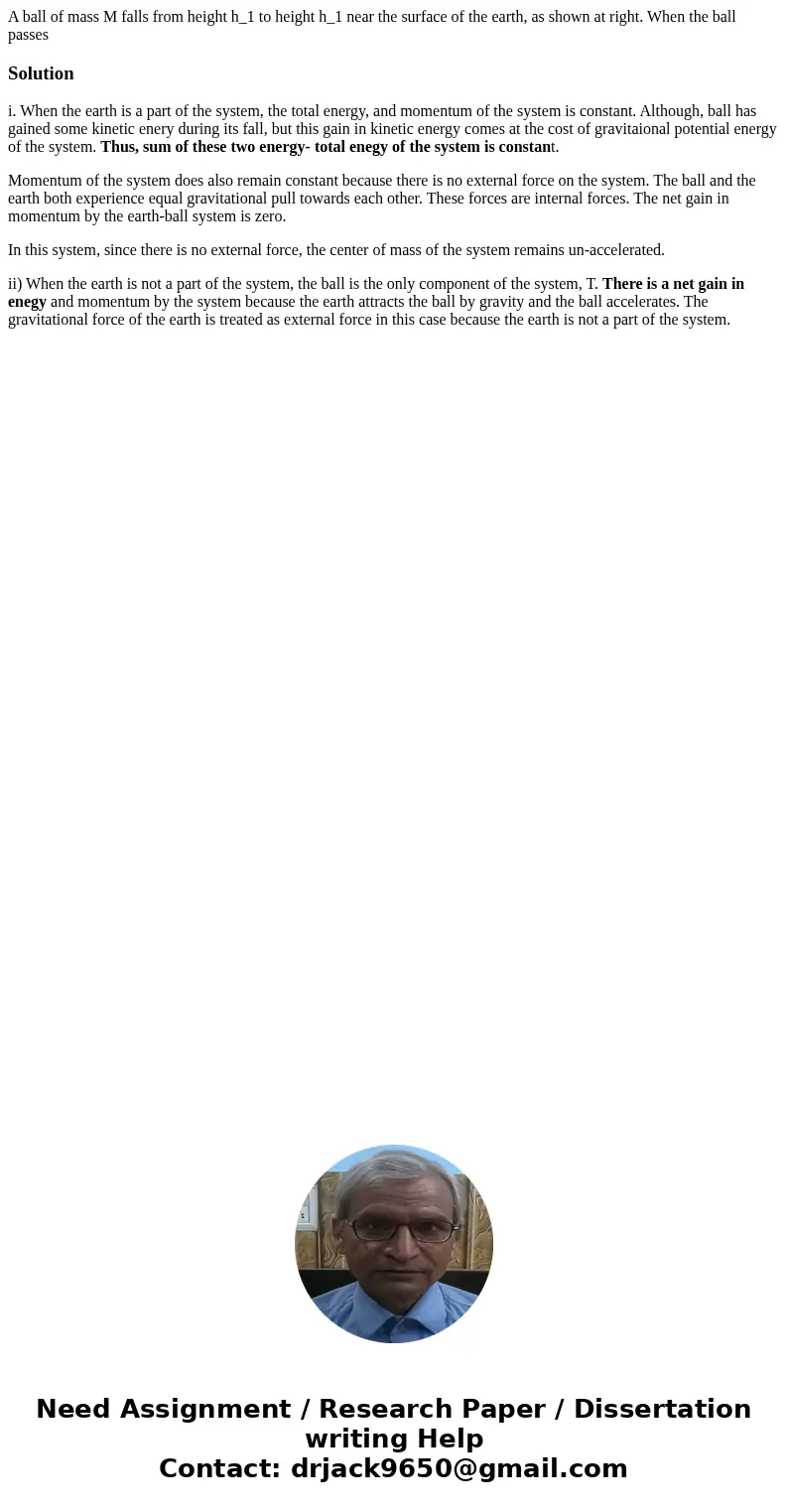A ball of mass M falls from height h1 to height h1 near the
Solution
i. When the earth is a part of the system, the total energy, and momentum of the system is constant. Although, ball has gained some kinetic enery during its fall, but this gain in kinetic energy comes at the cost of gravitaional potential energy of the system. Thus, sum of these two energy- total enegy of the system is constant.
Momentum of the system does also remain constant because there is no external force on the system. The ball and the earth both experience equal gravitational pull towards each other. These forces are internal forces. The net gain in momentum by the earth-ball system is zero.
In this system, since there is no external force, the center of mass of the system remains un-accelerated.
ii) When the earth is not a part of the system, the ball is the only component of the system, T. There is a net gain in enegy and momentum by the system because the earth attracts the ball by gravity and the ball accelerates. The gravitational force of the earth is treated as external force in this case because the earth is not a part of the system.

 Homework Sourse
Homework Sourse